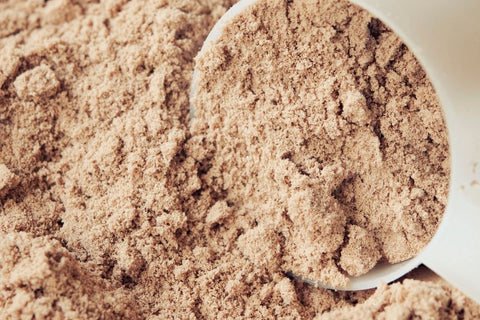Intermittent Fasting: Schedules, Benefits, and Essential Information
Fitness trends today shift as frequently as the weather—one moment, the sky is overcast, and before you know it, the sun is shining brighter than ever.
Yet, amid the fleeting fads that come and go, intermittent fasting (IF) has proven to be more than just another trend. It has withstood the test of time, emerging as a reliable approach for those seeking transformative health benefits without extreme lifestyle changes.
This method of eating (or rather, not eating) is reshaping how we think about health and nutrition. In this guide, we'll explore what intermittent fasting truly is, how it works, and how you can incorporate it to achieve your goals—weight management, improved fitness, or simply a healthier lifestyle.
Let's begin!
What is Intermittent Fasting?
Intermittent fasting is more than skipping breakfast or squeezing meals into a narrow window. At its core, it's a pattern of eating that alternates between periods of eating and fasting.
Unlike traditional diets that focus on what you eat, intermittent fasting is about when you eat.
By intentionally cycling between periods of eating and fasting, the body undergoes various beneficial metabolic changes that can promote fat loss, enhance energy levels, and improve overall health.
But don't let the word "fasting" intimidate you – we're not talking about days of hunger-induced misery. Instead, IF involves a flexible eating pattern that works with your body's natural rhythms, giving it time to rest, repair, and optimize its functions.
There are different ways to approach intermittent fasting, but its beauty is its flexibility—it can be as structured or as relaxed as you need it to be.
The Science Behind Intermittent Fasting: How Does It Work?

To truly appreciate intermittent fasting's potential, we need to first be thorough with the biological processes it triggers. When we fast, we're not just giving our digestive system a break; we're initiating a cascade of metabolic changes that can profoundly affect our health.
Metabolic Switching: The Key to Fasting's Power
Intermittent fasting's effectiveness lies in a process called metabolic switching. Here's how it unfolds:
1. Fed State: Our bodies primarily use glucose (sugar) from carbohydrates as the primary energy source when we eat. Insulin levels rise to help cells absorb this glucose and store excess for later use.
2. Post-absorptive State: About 3-6 hours after eating, as insulin levels drop, our bodies break down glycogen (stored glucose) to maintain blood sugar levels.
3. Fasted State: After 12 hours without food, glycogen stores become depleted. This is what we are concerned with today. Your body switches to breaking down fat for energy, a process called lipolysis.
In essence, fasting allows your body to switch from burning sugar to burning fat, which results in weight loss.
4. Ketosis: As fasting continues, the liver produces ketone bodies from fatty acids. These ketones are an alternative fuel source for the brain and other organs, leading to ketosis.
This metabolic flexibility – the ability to switch between glucose and ketones for fuel – is believed to be at the heart of many of fasting's benefits.
Moreover, fasting triggers other beneficial processes, such as autophagy, where cells break down and recycle old, dysfunctional components. This process is associated with longevity and disease prevention, making intermittent fasting a strategy for not only weight management but also overall wellness.
What is the Best Intermittent Fasting Window to Lose Belly Fat?

The "best" fasting window can vary depending on your lifestyle. Still, the 16:8 method is a standard recommendation for weight loss, especially belly fat. This method involves fasting for 16 hours and eating within an 8-hour window.
Here's why it works: fasting for 16 hours gives your body enough time to burn through its glycogen stores and access fat reserves for energy. The 8-hour eating window allows you to fit in two or three meals, ensuring you don't feel deprived or overly restricted.
Many people naturally consume fewer calories during this shorter eating period, aiding in fat loss without the need for obsessive calorie counting.
However, different methods work for different people, and other popular fasting windows include:
- 12:12 Method: A balanced option for beginners, with 12 hours of fasting and 12 hours of eating. This is less restrictive but still allows your body to enjoy some of the benefits of fasting.
- 5:2 Method: You usually eat for five days and restrict calories (around 500-600) on two non-consecutive days. This approach is more flexible and suits those who prefer to avoid fast daily.
- Eat-Stop-Eat: This method involves a 24-hour fast once or twice a week. For instance, you might fast from dinner one day until dinner the next.
- Alternate-day fasting: As the name suggests, this involves alternating between "fasting" days (deficient calorie intake) and regular eating days.
While any fasting window can contribute to fat loss, consistency and pairing it with a healthy, balanced diet, plenty of water, and some healthy, high protein snacks are essential to long-term results.
How to Start Intermittent Fasting
Starting intermittent fasting can seem intimidating, but it doesn't have to be. The easiest way to begin is by gradually increasing the duration of your fasting window.
With the right approach, you can ease into this lifestyle change and set yourself up for long-term success. Here's a step-by-step guide to help you start your intermittent fasting journey:
1. Choose Your Fasting Method
Start by selecting an intermittent fasting approach that works best with your lifestyle and goals:
- Beginners: The 12/12 method (12 hours fasting, 12 hours eating) is an excellent starting point. It's as simple as stopping after dinner and eating again at breakfast.
- Intermediate: Progress to the 16/8 method, which often means skipping breakfast and eating between noon and 8 PM.
- Advanced: Consider more challenging approaches, such as the 5:2 diet or 24-hour fasts, only after you're comfortable with shorter fasting periods.
2. Gradual Implementation
Don't dive in headfirst. Gradually extend your fasting window over a few weeks. This approach allows your body to adapt and reduces the likelihood of side effects like headaches or irritability.
3. Stay Hydrated
Hydration is a must during fasting periods. Aim for at least 8-10 glasses of water daily. Herbal teas and black coffee can also be consumed during fasting windows (more on later).
4. Plan Your Meals
When you do eat, focus on nutrient-dense, whole foods. Plan your meals to ensure you're getting a balance of proteins, healthy fats, complex carbohydrates, healthy snacks, and plenty of fruits and vegetables. The temptation to eat junk is always stronger after prolonged hunger, but you must offer resistance.
5. Listen to Your Body
Pay attention to how you feel. If you experience prolonged fatigue, dizziness, or other concerning symptoms, it's okay to break your fast early. Your health and well-being should always come first.
6. Time Your Exercise
Many find that exercising during fasting states enhances fat burning. However, this can be challenging at first. Experiment with workout timing to see what feels best for you.
7. Get Enough Sleep
Quality sleep is a non-negotiable for the success of any health regimen, including intermittent fasting. Aim for 7-9 hours of sleep per night to support your body's natural rhythms and hormonal balance.
8. Track Your Progress
Keep a journal of your fasting schedule, meals, energy levels, and any changes you notice. This can help you identify what's working and what might need adjustment.
9. Be Patient and Consistent
Results from intermittent fasting aren't instantaneous. Give your body time to adapt and reap the benefits. Consistency is more important than perfection.
10. Consult a Healthcare Professional
Before starting any new dietary regimen, especially if you have pre-existing health conditions or are taking medications, consult a healthcare provider to ensure intermittent fasting is safe.
Remember, the goal is to make intermittent fasting a sustainable part of your lifestyle, not a short-term diet. By easing into the practice and listening to your body, you'll likely stick with it and enjoy its numerous benefits in the long run.
What Can You Drink During Intermittent Fasting?
One of the most common questions about intermittent fasting is, "What can I drink during my fasting window?" While staying hydrated during fasting is essential, choosing beverages that won't break your fast is equally important. Let's examine the dos and don'ts of fasting hydration.

The Do's
These drinks are generally considered safe during fasting periods and won't significantly impact your fast:
1. Water: The gold standard for hydration. Plain water, still or sparkling, is always a safe choice.
2. Black Coffee: Good news for coffee lovers! Black coffee contains negligible calories and won't break your fast. It may enhance some of fasting's benefits by increasing fat oxidation.
3. Unsweetened Tea: Whether you prefer green, black, or herbal teas, unsweetened teas are excellent options. Many teas offer additional health benefits, such as the antioxidants in green tea.
4. Apple Cider Vinegar: A tablespoon of ACV in water is a popular choice among fasters. While it contains a few calories, it's unlikely to significantly impact your fast and may have additional health benefits.
The Don'ts
These drinks will definitely break your fast and must be avoided by all means:
1. Fruit Juices: Even unsweetened juices contain natural sugars and calories.
2. Milk or Cream: Any milk, including non-dairy options, contains calories and will break your fast.
3. Alcohol: Besides containing calories, alcohol can impact your body's fat-burning processes.
4. Soft/Energy Drinks: Soft drinks often contain sugars and calories, even when labeled "zero-calorie."
Intermittent Fasting Benefits
Intermittent fasting has garnered attention not only for its potential weight loss benefits but also for its wide-ranging positive effects on overall health and wellness. Let's explore the myriad ways this eating pattern can contribute to your well-being, backed by scientific research and real-world experiences.
1. Weight Management and Body Composition
- Fat Loss: By lowering insulin levels and increasing human growth hormone, intermittent fasting can accelerate fat burning, particularly stubborn belly fat, especially when paired with the right low calorie meals.
- Muscle Preservation: Unlike many calorie-restrictive diets, intermittent fasting, when combined with resistance training, can help preserve muscle mass during weight loss.
2. Metabolic Health
- Insulin Sensitivity: Regular fasting periods can dramatically improve insulin sensitivity, potentially reducing the risk of type 2 diabetes.
- Blood Sugar Control: Fasting helps stabilize blood sugar levels, reducing harmful spikes and crashes.
3. Heart Health
- Improved Lipid Profile: Studies have shown intermittent fasting can lower LDL cholesterol and triglycerides while increasing HDL cholesterol.
- Blood Pressure Regulation: Some research indicates that fasting can help lower blood pressure, a key factor in cardiovascular health.
4. Brain Function and Neuroprotection
- Cognitive Performance: Many practitioners report improved focus, clarity, and productivity during fasting.
5. Longevity and Cellular Health
- Autophagy: This cellular cleaning process, enhanced during fasting, may contribute to longevity by removing damaged cellular components.
- Oxidative Stress Reduction: Fasting enhances the body's resistance to oxidative stress, which is implicated in aging and many chronic diseases.
6. Inflammation Reduction
- Chronic Inflammation: Intermittent fasting has been shown to reduce markers of systemic inflammation, which is linked to numerous chronic diseases.
7. Gut Health
- Digestive Rest: Fasting periods allow the digestive system to rest and repair, potentially improving overall gut health.
- Microbiome Balance: Some research suggests that fasting can positively influence the gut microbiome, enhancing digestive health and immune function.
8. Enhanced Athletic Performance
- Metabolic Flexibility: Intermittent fasting can enhance endurance and recovery by improving the body's ability to switch between fuel sources.
9. Psychological Benefits
- Mindful Eating: Intermittent fasting's structured eating windows often lead to more mindful food choices and a better relationship with food.
- Mental Clarity: Many practitioners report a sense of mental sharpness and emotional stability during fasting periods.
10. Simplified Lifestyle
- Freedom from Constant Cooking: With fewer meals to plan and prepare, many people find intermittent fasting simplifies their lives. This can be particularly beneficial for busy professionals who want to reduce decision fatigue and streamline their schedules.
Wrapping Up: Snacking During Intermittent Fasting

While intermittent fasting involves limiting eating to certain windows, the quality of your snacks during those windows matters just as much as the timing.
It's easy to fall into the trap of consuming unhealthy, processed snacks after a fasting period, but choosing nutrient-dense, light snacks can help you make the most of your intermittent fasting routine.
This is where 100 Cal Snacks comes in as an ideal option. Our protein bars and protein puffs are portion controlled at 100 calories, besides being high in essential nutrients like protein and fiber, thereby supporting optimum gut health.
Unlike many snack options that can be heavy on your gut or packed with added sugars and carbs, 100 Cal Snacks offers low- carb, sugar-free snacks, free from sugar alcohols, making them light and easy to digest. This is particularly beneficial during intermittent fasting, when your digestive system might be more sensitive to certain foods after a period of fasting.
Moreover, our snacks are infused with superfood adaptogens like ashwagandha, which support mental clarity and relaxation—two things that can be incredibly helpful when fasting. Ashwagandha has been shown to reduce stress and enhance focus, making it a perfect addition to a fasting-friendly snack, helping you stay sharp and calm throughout the day.
If you are looking for the perfect snack to complement your fasting routine, look no further. Explore Chocolate Protein Bars, BBQ Protein Puffs, and the newly launched Peanut Butter Protein Bars from 100 Cal Snacks today and see how we can help you on your wellness journey!




